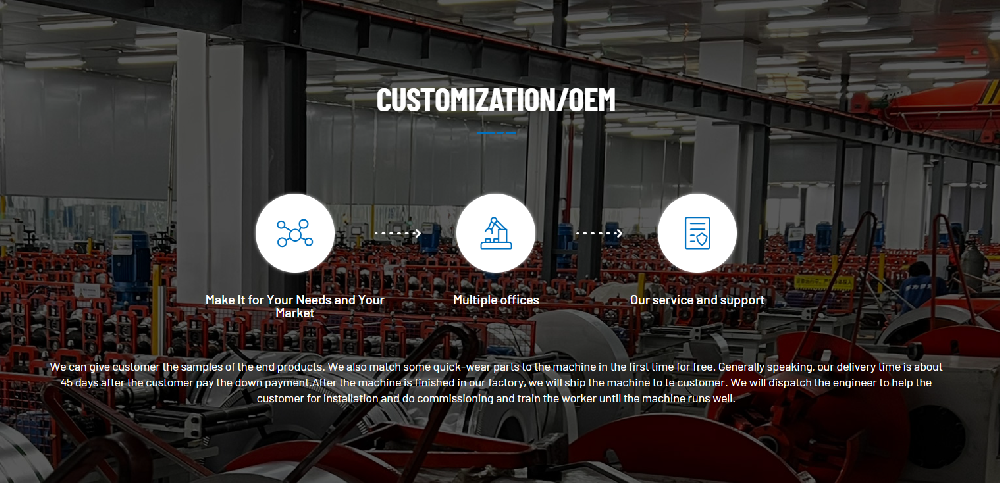Navigation Menu
Contact Us
- Email:
- info@wxavatar.com
- Address:
- Yurong Village, Yuqi Street, Huishan District, Wuxi, China.
Release Date:May 17, 2025 Visit:46 Source:Roll Forming Machine Factory
Metal fabrication shops constantly look for ways to work smarter and faster. One method that's making a real difference is custom roll forming. This specialized process shapes metal by passing it through a series of rollers, each performing a small part of the overall forming operation. But what makes it such a game-changer for efficiency? Let's explore the practical benefits.

Consistent Quality with Less Effort
Custom roll forming creates uniform parts with minimal variation. Unlike some other forming methods that might require frequent adjustments, once the rollers are set up correctly, they produce part after part with consistent dimensions. This reliability means:
Fewer rejected parts
Less time spent on quality checks
Reduced need for rework
Workers can focus on other tasks rather than constantly monitoring output quality.
Faster Production Times
The continuous nature of roll forming allows for impressive production speeds. While traditional methods might require multiple steps to achieve complex shapes, roll forming accomplishes this in one smooth operation. Some systems can produce finished parts at speeds exceeding 100 feet per minute, depending on material and complexity.
Material Savings Add Up
Precision in roll forming leads to better material utilization. The process:
Minimizes scrap compared to cutting from sheet metal
Allows for nesting parts efficiently when planning production runs
Reduces waste from trial-and-error adjustments
Over time, these savings can make a noticeable difference in material costs.
Lower Labor Requirements
Once the initial setup is complete, roll forming machines can often operate with minimal supervision. This frees up skilled workers to handle more complex tasks while the machine handles high-volume production. Many operations find they can:
Reduce direct labor hours per part
Reassign workers to value-added tasks
Handle larger orders without adding staff
Flexibility Without Sacrificing Speed
Modern roll forming equipment can quickly switch between different profiles. While changeovers aren't instantaneous, they're typically faster than retooling other types of forming equipment. This means shops can:
Handle smaller batch sizes economically
Respond faster to customer requests
Offer more product variations without major downtime
Reduced Secondary Operations
Many roll-formed parts come off the line nearly complete, with features like holes, notches, or embossing formed during the primary process. This integration means:
Fewer separate processing steps
Less handling between operations
Lower risk of damage from multiple handlings
Long-Term Cost Benefits
While the initial investment in roll forming equipment can be significant, the long-term savings often justify the cost through:
Lower per-part production costs at volume
Reduced tooling expenses compared to some alternatives
Longer tool life due to gradual forming rather than impact

For metal fabricators looking to improve their operations, custom roll forming offers practical efficiency gains that translate to better productivity and profitability. The key is matching the right roll forming solution to your specific product needs and production volumes. Many shops find that even implementing roll forming for just part of their product line can make a meaningful difference in their overall operation.